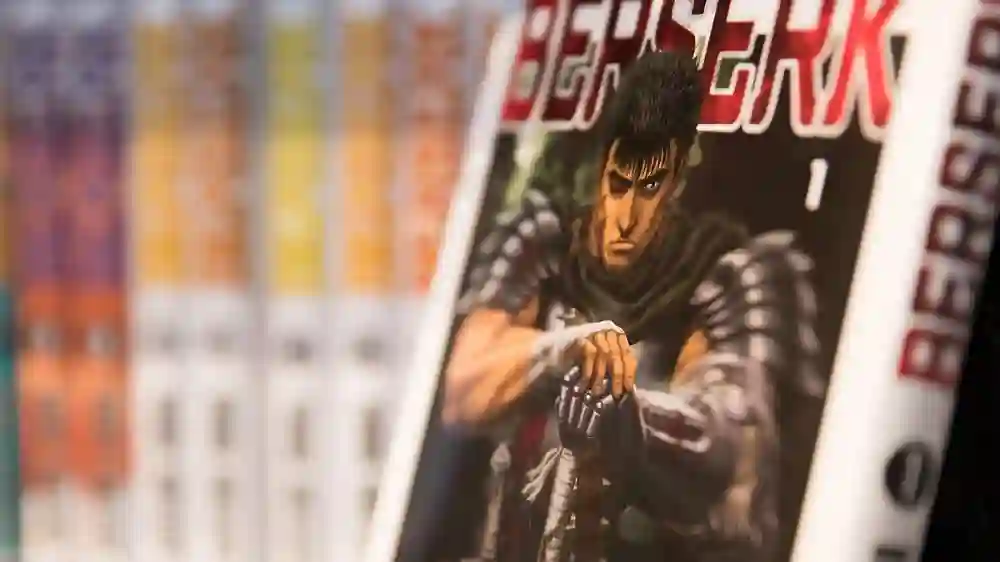Kentaro Miura’s iconic dark fantasy manga, “Berserk,” is known for its complex characters and thought-provoking themes. Among the notable aspects of the manga is its portrayal of women, with Casca being a central character who stands as a testament to Miura’s ability to create strong and multi-dimensional female characters. In this article, we will explore the role of women in “Berserk,” focusing on Casca and examining the broader representation of women in the series.
Casca: A Complex and Resilient Heroine
Casca, introduced early in the series, is a character who defies traditional gender roles and expectations. As a member of the Band of the Hawk, she is a skilled warrior and a commander in Griffith’s army, a position typically reserved for men in the medieval-inspired world of “Berserk.” Casca’s strength, determination, and leadership abilities make her a standout character in the manga.
Casca’s character arc is marked by personal growth and resilience. Her initial distrust of Guts, the series’ protagonist, evolves into a deep and complex relationship that forms a central pillar of the narrative. Casca’s journey from a warrior who initially resents Guts to a woman who finds strength and vulnerability in their connection is a testament to Miura’s skill in character development.
The Eclipse and Its Impact
One of the most significant moments in “Berserk” is the Eclipse, a nightmarish event that marks a turning point in the series. During the Eclipse, Casca, along with the other members of the Band of the Hawk, is betrayed and subjected to horrific trauma at the hands of demonic entities.
Casca’s character is profoundly affected by the Eclipse, and her mental and emotional state deteriorates significantly. She is left in a fragile and traumatized condition, unable to cope with the memories of the horrors she endured. This portrayal of trauma and its impact on a female character adds depth and realism to the narrative, challenging conventional depictions of women in dark fantasy.
Guts and Casca: A Complex Relationship
The relationship between Guts and Casca is one of the most intricate and emotionally charged dynamics in “Berserk.” Initially marked by tension and conflict, their connection evolves into a profound and nuanced bond. Guts becomes Casca’s protector and caregiver, assuming a role of responsibility that contrasts with his earlier lone-wolf persona.
Miura’s depiction of the relationship between Guts and Casca is characterized by the exploration of themes such as love, sacrifice, and the complexities of caring for a traumatized partner. Casca’s vulnerability and Guts’ unwavering commitment to her create a poignant and emotionally resonant narrative arc.
Female Characters Beyond Casca
While Casca is a central and prominent female character in “Berserk,” the manga also features other women who contribute to the narrative in various ways. Some of these characters challenge traditional gender roles, while others navigate the complexities of a world marked by violence and danger.
Farnese, initially introduced as an antagonist, undergoes significant character development throughout the series. Her transformation from a religious zealot to a character struggling with her beliefs and growing connection to Guts adds depth and complexity to her role.
Serpico, Farnese’s loyal and enigmatic protector, is another character who defies conventional gender roles. His dynamic with Farnese adds layers of intrigue to their relationship, highlighting the complexities of gender and power dynamics in “Berserk.”
The Character of Sonia, a member of the mysterious Falconia, also plays a significant role in the later stages of the manga. Her character is marked by a unique connection to supernatural elements and a sense of destiny that adds intrigue to the narrative.
Challenges and Triumphs
The female characters in “Berserk” face numerous challenges and adversities, reflecting the harsh and unforgiving world in which the story is set. They grapple with trauma, violence, and personal growth, all while navigating a society that often marginalizes and underestimates them.
Casca’s journey, in particular, serves as a poignant exploration of the challenges faced by women in a world marked by brutality and misogyny. Her resilience and inner strength shine through as she confronts her trauma and seeks to regain agency over her life.
The Impact of Casca’s Character
Casca’s character has had a profound impact not only within the narrative but also on the broader discussion of women in manga and fantasy literature. Her portrayal as a strong and complex female character challenges stereotypes and traditional gender roles, setting a precedent for more nuanced and multifaceted depictions of women in the genre.
Casca’s character resonates with readers, as her struggles and triumphs mirror the universal themes of resilience, trauma recovery, and personal growth. Her portrayal serves as a reminder of the importance of diverse and well-developed female characters in storytelling.
Conclusion
The role of women in “Berserk,” exemplified by the complex and resilient character of Casca, showcases Kentaro Miura’s storytelling prowess and commitment to creating multi-dimensional female characters. Casca’s journey, from a skilled warrior to a traumatized survivor, challenges traditional gender roles and expectations, adding depth and realism to the narrative.
Beyond Casca, “Berserk” features other female characters who contribute to the rich tapestry of the story, each navigating their own challenges and complexities. The representation of women in “Berserk” serves as a testament to the series’ enduring impact and its contribution to the broader discussion of gender in manga and dark fantasy literature.

